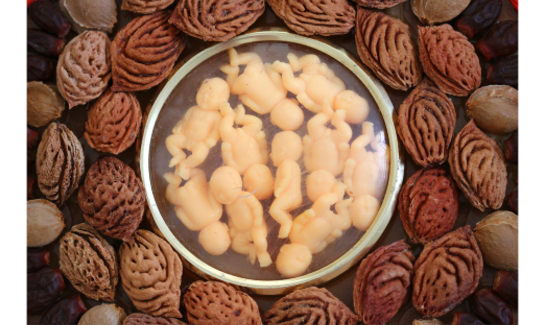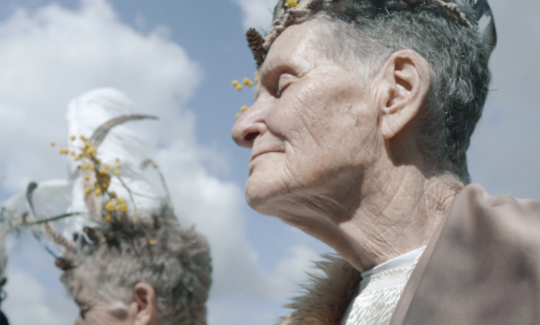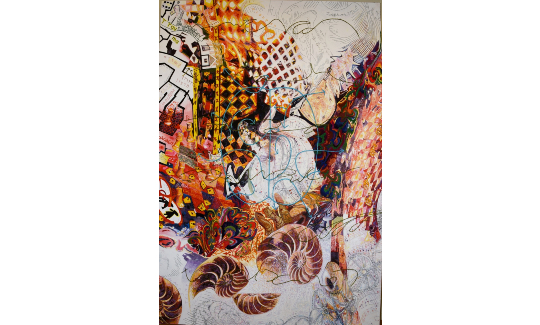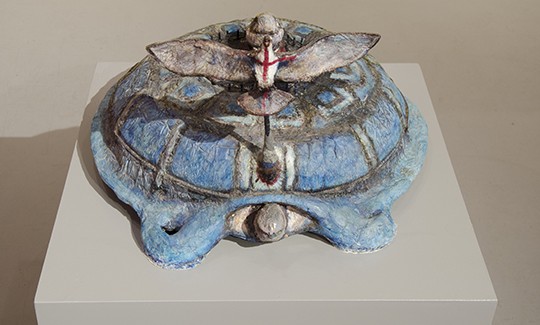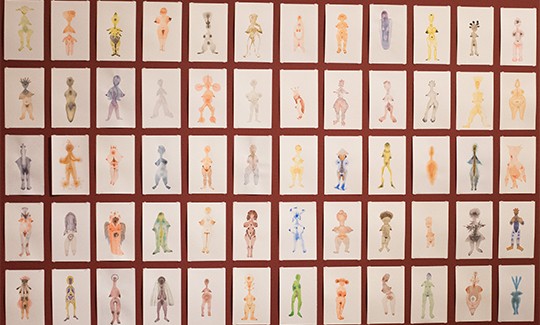The Mother Goddess
Group Exhibition
Saturday, 21.12.19, 20:00
Saturday, 01.08.20
Curator: Michal Shachnai Yakobi
More info:
046030800In this exhibition, a common thread connects between miniscule, prehistoric clay figurines dating from 8,000 years ago, found at the Sha'ar HaGolan archeological site; medieval images of women inspired by Tarot cards; and the works of four contemporary Israeli women artists. The works of these artists, who belong to different generations, echo, in various contexts, the ancient figurines and the eternal myth of the great "Mother Goddess."
On the banks of the Yarmuk River, near Kibbutz Sha'ar HaGolan, an 8,000-year-old Neolithic village was discovered. It was found to contain the largest collection of prehistoric art objects in the ancient Near East, and is considered a site of international importance. The objects found at the site are outstanding in their quality of sculpture and design (figurines from the site are displayed at the Metropolitan Museum in New York, the Louvre Museum in Paris, and the Israel Museum). Hundreds of female figurines were found in dwellings discovered at the site; the circumference of these figurines' hips is nearly four times the size of their body. The posture of all the figurines is identical: one hand rests on their chest, the other on their wide hips. The hand-sized figurines are richly detailed, highly stylized, with an emphasis on the parts of the body related to birth and motherhood.
Some scholars believe that female figurines in prehistoric art are archetypes of the "Mother Goddess" or the "Great Mother." This ancient goddess, widely worshipped in Europe and the Near East, symbolized the fertility of man, animals, and plants. The advocates of this view believe that the prehistoric period included an era of belief in a feminine, matriarchal divinity. They hypothesize that the clay figurines from Sha'ar HaGolan were used in rituals related to the worship of fertility. According to this theory, the ability to conceive and give birth was considered mysterious and sacred, and each woman was seen as the embodiment of the Great Mother Goddess.
What is the uniqueness of the feminine divinity? How does a matriarchal society differ from a patriarchal one? Marija Gimbutas, a feminist archeologist and folklore scholar, argues that the matriarchal goddess culture placed women at the center of society and was characterized by values of peace, respect for women, and economic equality. Her studies examined large settlements of up to 17,000 residents, with dwellings that contained female figurines. Excavations of these settlements found that all their dwellings were of the same size, and that they had no walls or weapons. This led to the conclusion that the ancient matriarchal culture was a peaceful one. According to Gimbutas, the patriarchal masculine culture that developed in the Indo-European Bronze Age invented inequality.
Today, as part of the New Age spirit, there is a growing nostalgia for the Mother Goddess. She is seen as merciful, embracing, warm, nursing, nurturing, and attuned to the natural life cycles of blossoming, wilting, and renewed growth. She is a divinity that abounds in softness and is not focused on threats, punishment, and control. Many women from the feminist movement adopt the myth of the matriarchal age, seeing the worship of a feminine divinity as a fitting response to millennia of Jewish, Christian, and Muslim patriarchy that has denied women equal religious participation or true spiritual leadership.

